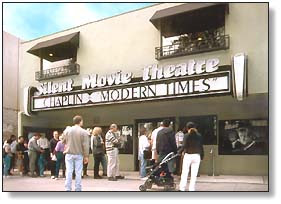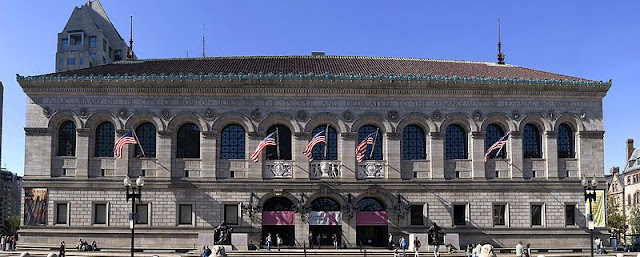 |
| Louisville, Kentucky's J.B. Speed Memorial Museum of Art, ca. 1927 |
 |
| Milwaukee Art Museum, 100 years in the future? |
Sometimes I'm led to wonder, given the lengths art museums have to go to today to attract visitors, whether in another generation or so, a lot of them will be forced to close their doors for lack of support. It would seem that today, if you want to give an art show, and get anyone to come, you either have to have the ghost of van Gogh, elephant dung, or tofu sculpture to more than raise an eyebrow of interest among the local gentry. And you practically need live performances of the whole Star Wars trilogy to bring in the men, women, and children off the streets. Add to that the apparent necessity that museums themselves be architectural works of art (right) which seem at least 100 years beyond their time, and cost 100 times what they did 100 years ago when many of our art museum first raised their roofs, and you end up with a tremendously costly burden of proof of relevance insofar as the present is concerned. The big museums can afford this. They have the people, the prestige, and the premises to survive. It's the little fellers I'm worried about, in smaller, Midwestern towns like Louisville (above), Nashville, Columbus, Memphis, Des Moines, places with very modest, Beaux-arts museums and collections, which survive mostly on handouts already, the vast majority of the local population couldn't even find the local art museum without a street map.
 |
| The Cadillac of Chicago's shrinking theater district. |
It's happened before, not to art museums, but to another sort of museum, those glorious marble palaces dedicated first to vaudeville and then motion pictures. Motion pictures killed off vaudeville and those "museums" that couldn't or wouldn't adapt became either parking lots or dime stores. As the popularity of motion pictures grew in the 1930s and 40s with the advent of "talkies" the museums dedicated to displaying their art became ever more and more lavish, sometimes growing in size to as many as 2,500 seats. Chicago's old Palace Theater is a fine example. Having made the transition from being a vaudeville showcase for the likes of Bob Hope, Jack Benny, Mae West, Jimmy Durante, and Sophie Tucker, the gracious old theater was even more popular featuring Elizabeth Taylor, Jimmy Stewart, Spencer Tracy, and Kathryn Hepburn. Then came Milton Berle, Lucille Ball, and Ed Sullivan and it was literally "lights out." Today, after millions of dollars in renovation, the Cadillac Palace (guess who put up a lot of the money) is one of only three old time Chicago theaters (out of more than a dozen) left in what was once the hottest theater district in the nation.
 |
| Are silent art Museums next? |
During the 1960s, when I was a student in Cincinnati, despite television, I had a choice of four palatial downtown movie theaters showing first-run films. Today, only one of those theaters is even still standing, and it's been turned into a Taco Bell. Years later when I revisited my old college haunts I found that, in all of downtown Cincinnati, there was only one movie theater (a two-screen cineplex) to be found tucked away off a second story skywalk in the back of an old hotel. In Los Angeles, the cradle of motion picture art, there is also only one movie theater dating back to the 1920s and silent films. Called, appropriately enough, The Silent Movie Theatre, this motion picture shrine shows only one film, ironically, Charlie Chaplin's Modern Times, said to be the last great silent film. When it opened in 1921, it was one of over 100. Are our smaller art museums today destined for such fates, instead of holding art relics, destined to become relics themselves? As the online art experience grows ever more accessible, cheaper, less virtual, and seemingly ever more real, will we one day eschew the two-hour walk-thru art experience for the leisurely five-minute surf-thru glance?































.jpg)










